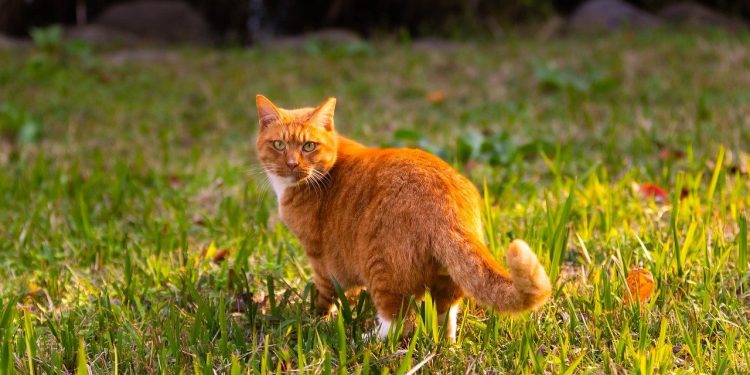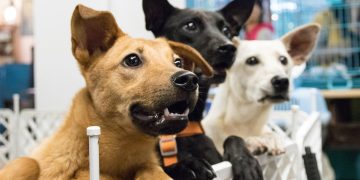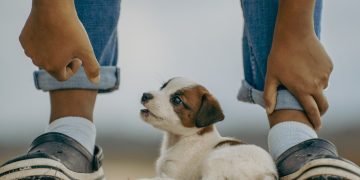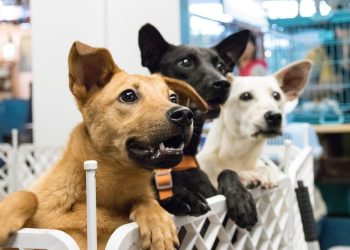Feeding our pets is one of the primary ways we show them love and care. However, overfeeding can have serious consequences for their health and well-being. While an extra treat or a little more food in their bowl might seem harmless, consistent overfeeding can lead to obesity, health complications, and a shortened lifespan. Understanding the dangers of overfeeding pets is crucial for their long-term health and happiness.
Why Overfeeding Happens
Misjudging Portion Sizes
Many pet owners are unaware of the appropriate portion sizes for their pets. Factors such as age, breed, activity level, and health status influence how much food a pet requires. Feeding guidelines on packaging are helpful but may not always align with your pet’s specific needs.
Treats and Table Scraps
Treats are a common way to reward pets, but excessive treats, especially high-calorie ones, can quickly add up. Sharing table scraps may also contribute to overfeeding, as many human foods are calorie-dense and unsuitable for pets.
Emotional Feeding
Some owners feed their pets in response to behaviors like begging, mistaking hunger for boredom or attention-seeking. Emotional feeding can reinforce negative behaviors and lead to overeating.
Lack of Exercise
When pets consume more calories than they burn, weight gain is inevitable. Overfeeding combined with inadequate exercise is a significant factor in pet obesity.
Health Risks of Overfeeding
Obesity
- Prevalence: Pet obesity is a growing epidemic, with over 50% of dogs and cats in the U.S. classified as overweight or obese.
- Consequences:
- Joint problems such as arthritis.
- Reduced mobility and stamina.
- Difficulty breathing or heat intolerance.
Diabetes
Overfeeding, particularly with high-carbohydrate diets, can lead to insulin resistance and diabetes, especially in cats. Diabetes requires lifelong management and can significantly impact a pet’s quality of life.
Heart Disease
Excess weight puts additional strain on the heart, leading to conditions such as hypertension and congestive heart failure.
Liver Disease
In overweight pets, fat deposits can accumulate in the liver, impairing its function. This condition, known as hepatic lipidosis, is particularly dangerous for cats.
Decreased Lifespan
Research shows that overweight pets have shorter lifespans compared to their leaner counterparts. For example, overweight dogs may live up to two years less than those at a healthy weight.
Behavioral and Emotional Impacts
Reduced Playfulness
Excess weight can make pets lethargic and less inclined to play, which further exacerbates weight gain.
Increased Anxiety
Overfed pets may experience anxiety due to digestive discomfort or frustration from reduced mobility.
Begging Behavior
Feeding pets in response to begging can create a cycle where they associate whining or meowing with receiving food, leading to persistent and demanding behaviors.
Recognizing the Signs of Overfeeding
Physical Signs
- Weight gain and a noticeable lack of a defined waist.
- Difficulty feeling the ribs without pressing hard.
- Fat deposits around the neck, chest, or base of the tail.
Behavioral Signs
- Reluctance to exercise or play.
- Heavy breathing or panting after minimal activity.
- Difficulty jumping or climbing stairs (in cats).
Digestive Issues
- Frequent vomiting or diarrhea.
- Constipation or bloating.
Preventing Overfeeding
Measure Portions
- Use a measuring cup or digital scale to ensure accurate portion sizes.
- Follow feeding guidelines provided by your veterinarian or the pet food manufacturer.
Establish a Feeding Schedule
- Feed pets at consistent times each day to regulate digestion and prevent overeating.
- Avoid free-feeding, which allows pets to eat unlimited amounts throughout the day.
Monitor Treat Intake
- Treats should account for no more than 10% of your pet’s daily caloric intake.
- Opt for low-calorie treats or healthy alternatives like carrot sticks, green beans, or small pieces of apple (for dogs).
Provide a Balanced Diet
- Choose high-quality pet food that meets your pet’s nutritional needs.
- Avoid overloading their diet with high-carbohydrate or fatty foods.
Encouraging Healthy Habits
Regular Exercise
- Dogs: Daily walks, play sessions, and interactive toys keep dogs active and help burn calories.
- Cats: Use laser pointers, feather wands, or climbing structures to encourage movement.
Mental Stimulation
- Food puzzles and treat-dispensing toys can slow down eating and provide mental enrichment.
- Rotate toys and activities to keep your pet engaged.
Monitor Weight
- Weigh your pet regularly to track their weight and identify any changes.
- Consult your veterinarian if you notice significant weight gain or loss.
Adjusting Diets for Weight Management
Weight-Loss Formulas
- Many pet food brands offer weight-control formulas designed to be lower in calories while still providing essential nutrients.
- Consult your veterinarian before switching diets to ensure it meets your pet’s specific needs.
Portion Reduction
- Gradually reduce portion sizes under veterinary guidance to avoid nutritional deficiencies.
- Use a food journal to track meals and treat intake.
Avoid Crash Dieting
- Sudden and extreme calorie restriction can harm your pet, especially cats, who are prone to hepatic lipidosis if they lose weight too quickly.
Understanding Special Dietary Needs
Puppies and Kittens
- Young pets require more calories to support growth and development, but overfeeding can still lead to early obesity.
- Feed age-appropriate food and monitor growth regularly.
Senior Pets
- Older pets tend to have slower metabolisms and reduced activity levels, making portion control even more critical.
- Choose senior-specific diets with fewer calories and added joint-supporting nutrients.
Pets with Medical Conditions
- Pets with diabetes, kidney disease, or other health issues may require specialized diets.
- Work closely with your veterinarian to develop a feeding plan.
Addressing Overfeeding Habits
Educate Family Members
- Ensure everyone in the household understands the importance of portion control.
- Set clear guidelines for treats and table scraps.
Create a Feeding Routine
- Establish a feeding schedule and stick to it to prevent overindulgence.
- Use automatic feeders to help control portions if necessary.
Avoid Emotional Feeding
- Respond to begging with playtime, cuddles, or other forms of attention instead of food.
Overfeeding pets can have serious health, behavioral, and emotional consequences. By recognizing the risks and taking proactive steps to manage portion sizes, treat intake, and exercise, you can help your pet maintain a healthy weight and enjoy a longer, happier life.












